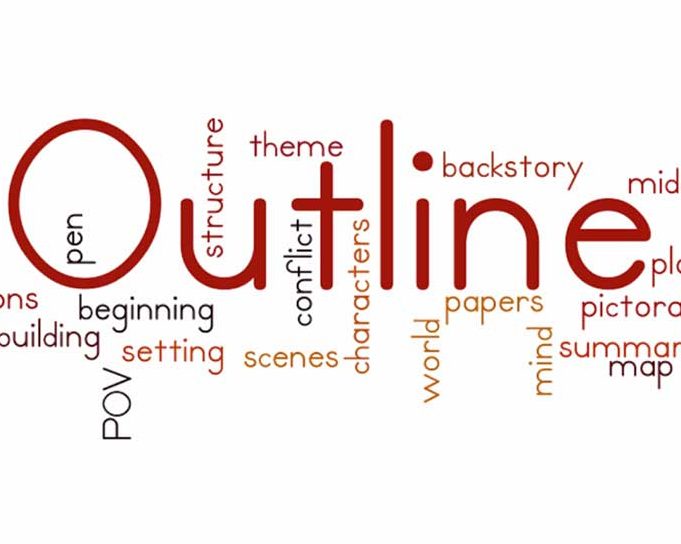Ways Novelists Can Brainstorm Plot and Scenes
We’ve been exploring the difficult task of brainstorming. And since novels are so complex, with so many crucial components that must cohesively work together, the task of brainstorming an entire novel can be daunting—even to seasoned novelists. Without some practical methods to take rough ideas and concepts and work them into beautifully constructed novels, it’s easy to get frustrated and befuddled, and feel like you’re stumbling around in the dark.
Whether You Are Plot-Driven or Character-Driven
That’s why I decided to spend some time going deep into brainstorming technique, and particularly discussing mind mapping. In previous posts I explained what mind mapping is and how it can help bring order to chaos. Most of us have no trouble coming up with cool ideas for a story, and maybe even find it easy to think of themes and how we might want the story to explore a theme. Last week, I showed how writers can mind map starting with a character or theme to generate other characters and situations that will help bring out themes.
Novels should be populated with believable characters, who have core motivations and beliefs based on their past. I discuss this in many posts, as I feel the key to a great novel is centered around truly believable characters. So by mind mapping characters to explore their core needs, deepest fear, and the lies they believe (based on their “wounds), you will come up with original, compelling characters. This is where I always start when plotting out a novel.
However, you may be more of a plot-driven writer. If so, maybe starting with plot will be more to your liking. I’d like to emphasize here, though, that writers would be remiss to focus only on one or the other. I highly recommend novelists mind map both plot and character, and then bring them together (which can be done also using and merging mind maps, which I’ll go into later).
Plotting Madness
I love plotting. Actually I hate it too. But when I use mind mapping to plot, it eases my anxiety and becomes really fun. Coming up with plot ideas is a great challenge, and is so essential. I shouldn’t have to state that the plot needs to serve the premise, which again speaks to your themes. If, using the example from last week’s post, you are writing a novel about the death penalty, clearly the plot you create needs to center around this theme and the characters you have developed (or will develop) to embody this theme. The scenes you come up with need to serve the interest of your plot, and from there you can tie in subplots (which you can also mind map).
Once you have a solid premise for your novel (think of your pitch), put that in the middle of your big chart or piece of paper (see my earlier post on how to create a mind map). Keep in mind your protagonist’s arc—how she is going to change and grow, what she learns from the things she experiences in this story, and where she is going to end up (literally and spiritually). This is important because the scenes you brainstorm need to provide the situation for that character to grow and change.
Brainstorm Conflict and Complications
Then start thinking of what scenes you need in order to tell the story you have in mind. Don’t focus too much on setting, unless that is key to the point of the scene. Brainstorm various scenarios for your characters, keeping in mind every scene has to have a point to it and serve the interests of the plot. Avoid secondary plot ideas for now; just focus on the main plot. What is your protagonist’s plot goal for the book? What obstacles and conflict can you throw in her way?
Think of worse and worse complications. What is the worst thing that can happen to thwart her? Who can betray her? What can she lose that she thought was vital? A friendship or marriage? A business? A child? Keep in mind to make things as bad and messy for your character as possible. By mind mapping all kinds of plot ideas, you will have enough to sort through to get your basic framework set up.
Brainstorm Twists and Reversals
After you have a number of scene ideas with complications and conflict, draw spokes outward from those ideas and think of how you could twist them or create a reversal. A man gets fired from his job—that’s a complication in the story. What twists could you attach to that scene idea? What if his getting fired opens the door for something good to happen, like the truth of some corruption coming out with consequences to his antagonist? What if his getting fired pushes his wife over the edge and she leaves him and disappears with his child?
Play with the expected reaction and see if you can turn it into the opposite. What seems a bad thing becomes a good thing. What seems something inconsequential turns out to be horrific. The person least likely to be an enemy turns out to be the hero’s nemesis. Or the one who has always opposed him suddenly does something unexpected to help him. With mind mapping, you can come up with lots of different variations, to give you ideas of ways to both complicate and enrich your plot to make it as intriguing and riveting as possible.
Don’t Think Linearly
Don’t worry about putting anything in order yet. That will come later. Once I have a couple dozen strong scene ideas, I start transferring them onto index cards. I’ll play with the order as I lay them out on my kitchen table. But when you are mind mapping, you don’t need to think linearly yet. You just want to throw ideas onto the paper to let your story start gelling. Try to come up with ten strong scenes that will be the pivotal moments in your story. Moments in which your character will change, be forced to make a choice, be pushed into despair. When you brainstorm like this, you won’t be likely to have a lot of nothing scenes where characters are just sitting around talking, or doing things that really aren’t important to propelling the story forward.
Subplots Serve the Main Plot
I could spend many posts just talking about developing subplots. I would highly recommend you create another mind map once you finish with your main plot one. This one will be your subplot mind map. State your plot summary in the middle of the paper. From there, brainstorm ideas of subplots that can help support your plot. What do I mean? This again ties in with your themes.
If you are writing a novel about a woman who is infertile and desperate to have a baby, you could brainstorm subplot ideas and scenes that will have her face this issue head-on. You can have her best friend accidentally get pregnant while engaged in a fleeting relationship and have an abortion, thinking nothing about it. Or you could have her be given a baby to foster, assured she will be able to adopt it, only to have the birth mother change her mind. The subplot could involve this young mother having problems in her life, which throw the two characters together with clashing needs. The key is to make your characters clash, so as you brainstorm scene and subplot ideas, think of ways to do this. And of course these types of subplots bring the themes of your novel to the forefront.
Think about mind mapping your main plot, then creating another mind map for your subplots involving secondary characters. For more ideas on these topics, see my previous posts here and here.
Any thoughts on this process? If you’ve gone ahead and done some plot mind mapping, share with other writers some neat things you discovered and how it is helping you create a solid plot.
Featured Photo Credit: incurable_hippie via Compfight cc












Another great post. Conflicts and complications are so important. Reminds me of those funny Direct TV commercials where the guy encounters one disaster after another because he stuck with cable. If commercials can do it in 30 seconds and hook you, authors must keep it going – conflict, tension – page after page.
Debra, I LOVE how you used the Direct TV commercials as an example of how to create one conflict after another. I hadn’t thought of it that way 🙂
I’m struggling with a new novel idea–about to give up on it, actually, but I believe mind mapping may help me sort things out. I used to use this kind of brainstorming with my high school students. Now it’s time for me to have a go at it. I *always* benefit from reading your posts. Thanks!
I feel like I differ from many writers. I don’t really brainstorm or plot anything, at least on paper. I tend to let stories unfold in my mind a bit at a time. I’ll write several chapters, then stop for days, weeks, or even months as I ponder the story’s direction. Then I’ll write another chunk. I tend to write a book in 12-18 months in about 3-4 sections in this fashion. And it is somewhat a linear process.
Excellent post! I’ve bookmarked it. I’m stuck partway through my latest book and frustrated. Now I’m going back to read your prior posts to see if I can figure out the problem. Thank you for all your good advice!
I LOOOVE mind mapping. I recently found an app called SimpleMind and I’ve installed it on my computer, my phone and my tablet and I mind map ideas anywhere. If I’m stuck at the doctor waiting to go in I open up a mind map to add to. I like the fact that it is quick and easy – you can chuck random ideas down and move them around and link them later (can’t do that with a pen and paper though) and it can work for ANYTHING!
At the moment I am trying to brainstorm my plot and my twist so that I can finish my novel- I’m almost there – but it has taken me soooo long and mind mapping has given me the energy and the new ideas to continue… Great post!
Thanks for sharing that info on SimpleMind. It’s good to hear what writers have discovered and are happily using!
this is my first time on your site or reading anything by you and I am very impressed. I am attempting to write a novel and have study many posts and yours is very easy to understand and enjoyable to read, gives me incentive and I am more positive that this will benefit me. I truly appreciate your work.
Thanks so much, Eleanor!
Excellent article =-)
I also suggest writers read “Stomping Kittens: a first-draft workbook” as I was recommended it and it has done wonders for my writing. It’s simple and very easy to understand, and it’s improved my writing 1,000% heck, it used to take me nearly a year to finish a novel, but now after reading Stomping Kittens it literally takes me only a few months from start to finish. A least give it a free look-over at Amazon. There’s a lot of great info on the free pages they let you see even if you don’t buy the book 😉